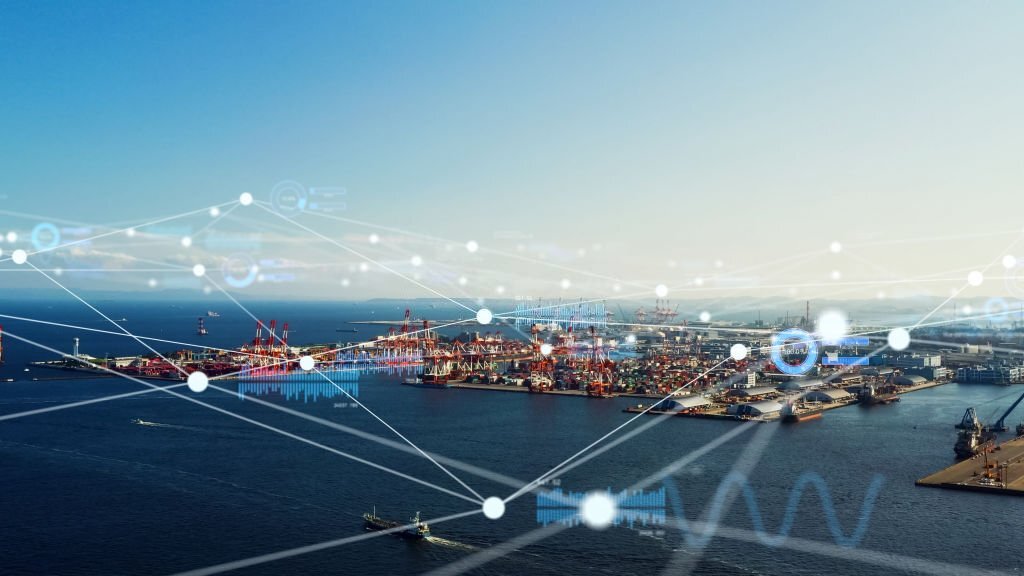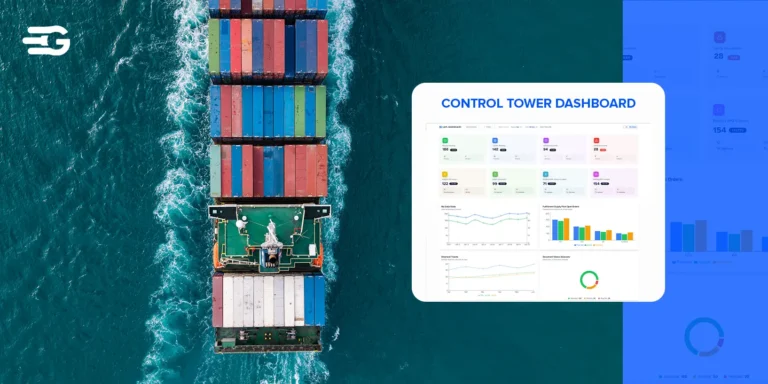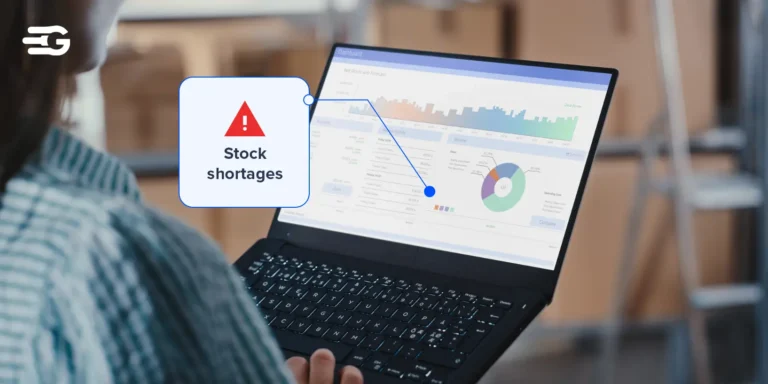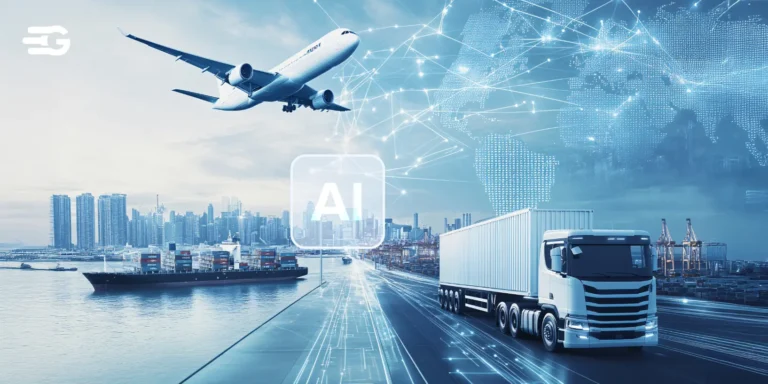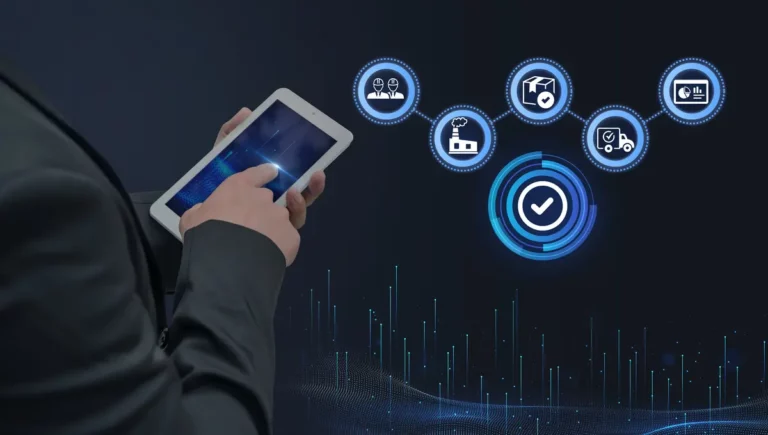Enhancing Supply Chain Efficiency with Ocean Visibility
In the vast ocean of global trade, 2025 emerges as a pivotal year for the freight industry. Fueled by innovative investments and technological advancements, the maritime sector is witnessing a remarkable evolution. This transformation is not just about enhancing Estimated Time of Arrival (ETA) accuracy but also revolutionizing how shipments are tracked and managed.
Picture a landscape where real-time insights, proactive logistics management, and cutting-edge tech solutions converge to navigate the complexities of global trade seamlessly. This isn’t merely a shift in logistics; it’s a narrative rewriting the rules of the game, promising greater efficiency, reliability, and agility on the high seas of commerce.
Technological Advancements in Ocean Visibility
Where uncertainty often reigns supreme, technological advancements in AI and real-time data analytics shine a guiding light through the murky depths. Imagine a scenario where historical data and real-time factors seamlessly blend together to paint a clear picture of the ocean environment. Variables like unpredictable weather, fluctuating port activity, and vessel schedules meld to offer a comprehensive understanding of the dynamic seascape.
At its essence, the integration of AI and real-time data analytics marks not just progress, but a fundamental shift in how we harness information. These algorithms, refined through data analysis, go beyond mere calculation to predict disruptions before they occur, providing invaluable foresight in the unpredictable world of maritime logistics.
Consider the benefits optimized routing that navigates global trade complexities with precision, and Estimated Time of Arrivals (ETAs) that defy the uncertainties of ocean transport. No longer are supply chain stakeholders left in the dark; armed with insights, they can navigate with confidence.
Platforms like GoComet serve as the stage for this transformation. Here, technology and tradition merge to offer unprecedented visibility and predictive capabilities. Stakeholders are no longer bystanders; they’re equipped to navigate challenges with agility and precision.
This isn’t about buzzwords or following trends; it’s about recognizing the real impact of these advancements. In a world where every decision counts, the ability to anticipate the future isn’t a luxury – it’s essential. In this era of ocean visibility, those who hesitate risk falling behind.
Importance and Key Benefits of Enhanced Ocean Visibility
In an era where consumer expectations drive market dynamics, the landscape of shipping and supply chain management has evolved dramatically. The demand for faster, more efficient delivery options has escalated, prompting a seismic shift in the logistics industry. In today’s date, same-day delivery is no longer a luxury but an expectation, driving businesses to revamp their strategies.
Ocean visibility is crucial for a multitude of reasons in today’s intricate logistics landscape. Unlike local shipments where delays might have minimal impact, even a small hiccup in ocean freight can trigger a series of setbacks, extending transit times significantly. Picture this: a delay in a container’s journey due to weather or port congestion causes a domino effect of missed connections and congested ports, drastically altering the Estimated Time of Arrival.
This visibility isn’t just about meeting customer expectations for faster deliveries, it’s a strategic necessity. Without it, businesses risk increased costs, diminished profit margins, and a struggle to meet the evolving demands of customers expecting swift service. Enhanced visibility doesn’t merely address current expectations; it’s the key to mitigating risks, optimizing resources, and fostering a more efficient supply chain ecosystem.
Leveraging technological advancements like IoT and AI-driven analytics becomes imperative, empowering stakeholders with real-time insights to make informed decisions and maintain service standards amid market pressures. From mitigating risks to optimizing operations and surpassing customer expectations, the advantages are profound and multifaceted.
Risk Mitigation: Real-time visibility enables proactive measures to mitigate risks associated with delays, allowing for swift responses to unforeseen circumstances like weather disruptions or port congestion.
Operational Efficiency: Enhanced visibility optimizes resource allocation, allowing for better planning and utilization of assets, thereby streamlining operations and reducing inefficiencies.
Supply Chain Resilience: It fosters a resilient supply chain ecosystem by providing insights to identify bottlenecks, allowing stakeholders to make adjustments and maintain operational continuity.
Improved Customer Service: Meeting customer expectations for timely deliveries becomes more achievable, enhancing customer satisfaction and loyalty while reducing the risk of losing customers due to delayed shipments.
Cost Optimization: Real-time data insights aid in identifying areas for cost savings, reducing unnecessary expenses related to delays or inefficiencies in the shipping process.
Strategic Decision Making: Data-driven insights enable informed decision-making, facilitating better long-term planning and strategies for businesses operating in the ocean freight domain.
Competitive Edge: Businesses with enhanced visibility gain a competitive advantage by offering reliable and efficient shipping services, meeting market demands, and surpassing competitors relying on traditional methods.
Adaptability and Agility: Access to real-time information allows for quick adaptations to changing circumstances, facilitating agility in adjusting routes or logistics strategies on the go.
Compliance and Security: Improved visibility assists in meeting compliance standards and enhancing security measures by closely monitoring shipments throughout the transit process.
Technological Advancements: Leveraging technologies like IoT, AI, and blockchain to achieve visibility not only enhances current operations but also prepares businesses for future advancements in the industry. You can utilize advanced supply chain visibility tools for real-time status tracking.
Real-World Applications
For a prominent chemical distributor spanning 11 countries, the pandemic-induced port congestion disrupted a substantial 51% of their monthly shipments, totaling 200 an illustrative example of the criticality of ocean visibility.
Amidst this disruption, the distributor sought real-time updates on port congestion from GoComet, recognizing the crucial role of ocean visibility.
GoComet’s tool delivered rapid, precise insights amid the chaos. Equipped with this crucial information, the distributor swiftly adjusted strategies, rerouting shipments and optimizing logistics. This agile response not only resolved immediate delays but notably improved their overall delivery efficiency during the tumultuous phase in global trade.
The disruption caused by pandemic-driven port congestion highlighted the essentiality of ocean visibility. Leveraging these real-time updates empowered the distributor to navigate uncertainties, emerging more resilient and better equipped to handle future challenges.
This case underscores the indispensable role of ocean visibility in supply chain resilience. It exemplifies how real-time updates, such as those provided by GoComet, shape effective responses in the dynamic landscape of global trade, emphasizing the vital need for visibility across ocean freight.
Challenges and Solutions in Implementing Ocean Visibility
The complexities of ocean freight demand robust solutions. Here’s a detailed exploration of these challenges and the transformative power of enhanced ocean visibility:
The integration of ocean visibility technologies presents a promising opportunity for streamlined supply chain management. However, embracing these advancements comes with its own set of hurdles that require strategic solutions. Let’s explore these challenges in-depth and uncover the best practices for a smooth integration process:
Challenges in Adopting Ocean Visibility Technologies:
Data Fragmentation:
The Challenge: The abundance of diverse data sources, varying formats, and incompatible systems leads to fragmented data landscapes. This fragmentation poses a significant barrier to achieving a comprehensive view of the supply chain.
Strategic Solution: Implementing standardized data protocols and robust integration frameworks is crucial. This approach harmonizes disparate data sources, ensuring a cohesive and accessible data landscape. Leveraging middleware or integration platforms facilitates cohesive data management across systems, providing a unified data view.
Limited Supply Chain Visibility:
The Challenge: Insufficient collaboration among stakeholders results in limited visibility across the supply chain. This lack of holistic visibility hampers informed decision-making and operational efficiency.
Strategic Solution: Cultivating a culture of collaboration among stakeholders is imperative. Utilizing shared platforms or portals encourages transparent communication and information sharing. This fosters a unified view of shipment statuses, inventory levels, and logistics operations, facilitating informed decision-making.
Technological Complexity:
The Challenge: The complexity of navigating through diverse technology landscapes and integration intricacies poses significant hurdles.
Strategic Solution: Prioritizing interoperability when selecting ocean visibility systems is essential. Opting for flexible, modular solutions and embracing API-driven integrations facilitate seamless data exchange. These adaptable systems align with existing infrastructure, ensuring smooth integration and future scalability.
Cost and ROI Uncertainty:
The Challenge: The substantial initial investment and uncertainties surrounding immediate Return on Investment (ROI) often deter organizations from embracing these technologies.
Strategic Solution: Thorough cost-benefit analyses are crucial in showcasing the long-term ROI potential. Initiate phased implementations or pilot projects to demonstrate tangible benefits before full-scale adoption. This approach instills confidence in the technology’s viability and its potential for enhancing operations.
Best Practices for Effective Integration:
Collaborative Stakeholder Engagement:
Best Practice: Foster collaborative relationships among internal departments and external partners to facilitate efficient data sharing and informed decision-making.
Robust Data Governance:
Best Practice: Establish stringent data governance policies to ensure data accuracy, security, and compliance. This fosters trust among stakeholders, mitigating risks associated with data management.
Scalable Solutions and Future Adaptability:
Best Practice: Choose scalable solutions adaptable to evolving business needs and technological advancements. Such solutions ensure seamless integration and flexibility for future expansions without disruptions.
Continuous Training and Support:
Best Practice: Provide ongoing training and support to enhance user proficiency. Encouraging system utilization maximizes the technology’s effectiveness within the organization.
Data-Driven Decision Making:
Best Practice: Harness data analytics and AI-driven insights for informed decision-making. This optimizes operations, identifies trends, and enables strategic planning.
Vendor Collaboration and Evaluation:
Best Practice: Collaborate closely with technology vendors and evaluate their performance regularly. Ensuring alignment with business goals drives continual improvements in system functionalities.
Pilot Projects and Iterative Approach:
Best Practice: Initiate pilot projects or phased implementations to manage risks and showcase benefits. This approach allows for fine-tuning of systems before widespread adoption, ensuring a smoother transition.
Conclusion –
In conclusion, the significance of ocean visibility in shaping the future of global trade and fortifying supply chain resilience cannot be overstated. The challenges within the intricate web of global supply chains necessitate a paradigm shift towards embracing advanced technologies for enhanced visibility. The ability to anticipate, adapt, and swiftly respond to disruptions along the maritime journey is pivotal for sustainable and efficient trade operations.
Investing in ocean visibility technologies stands as the lynchpin for a robust and agile supply chain ecosystem. It empowers supply chain leaders with the tools necessary to mitigate risks, optimize operations, and meet evolving customer demands. The seamless flow of information across the supply chain not only ensures timely and accurate deliveries but also enhances customer satisfaction and loyalty.
Therefore, supply chain leaders must seize this opportunity and invest in ocean visibility technologies. Embracing these advancements is not merely an option but a strategic imperative for ensuring operational excellence and staying ahead in today’s competitive landscape. By leveraging these technologies, organizations can future-proof their supply chains, bolster trade efficiency, and navigate the complexities of global commerce with resilience and foresight.
Let’s embark on this transformative journey together where investment in ocean visibility technologies becomes the cornerstone of resilient, adaptable, and thriving supply chains, poised for the challenges and opportunities that lie ahead.
